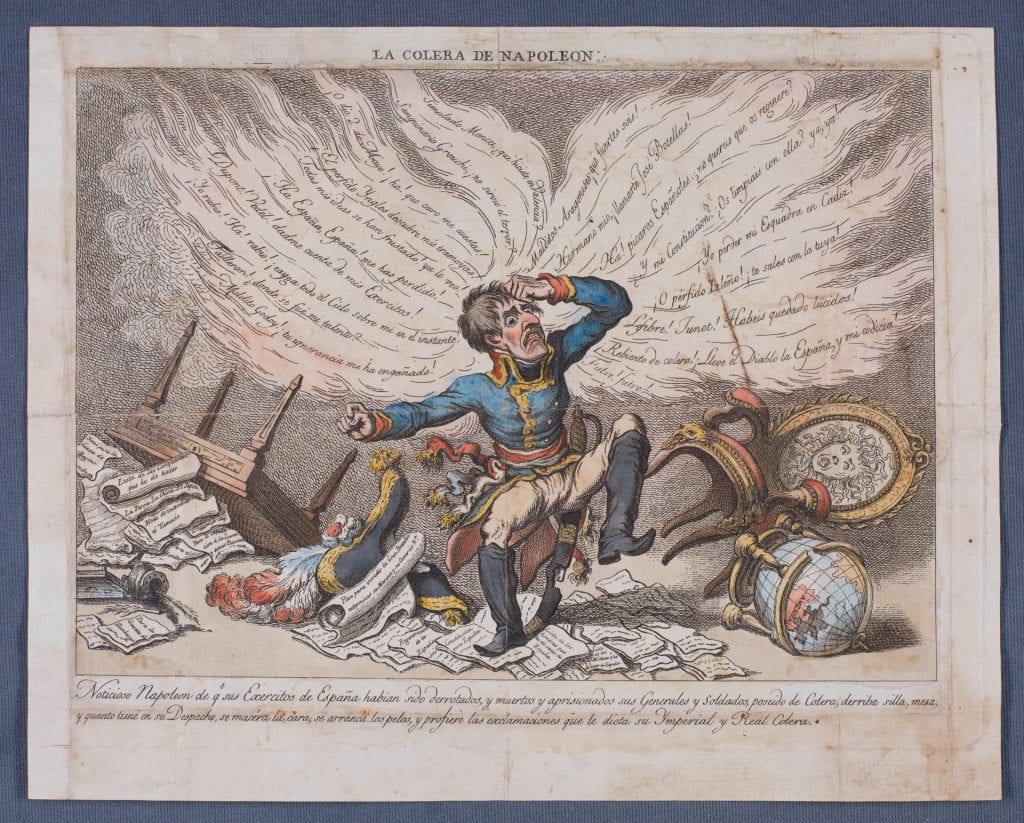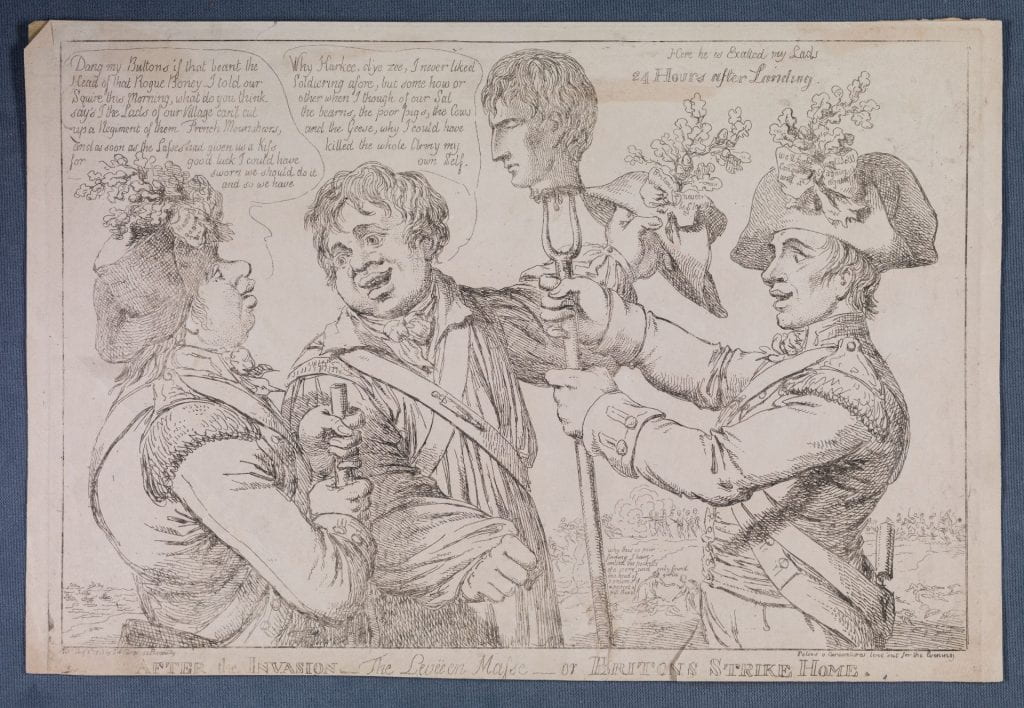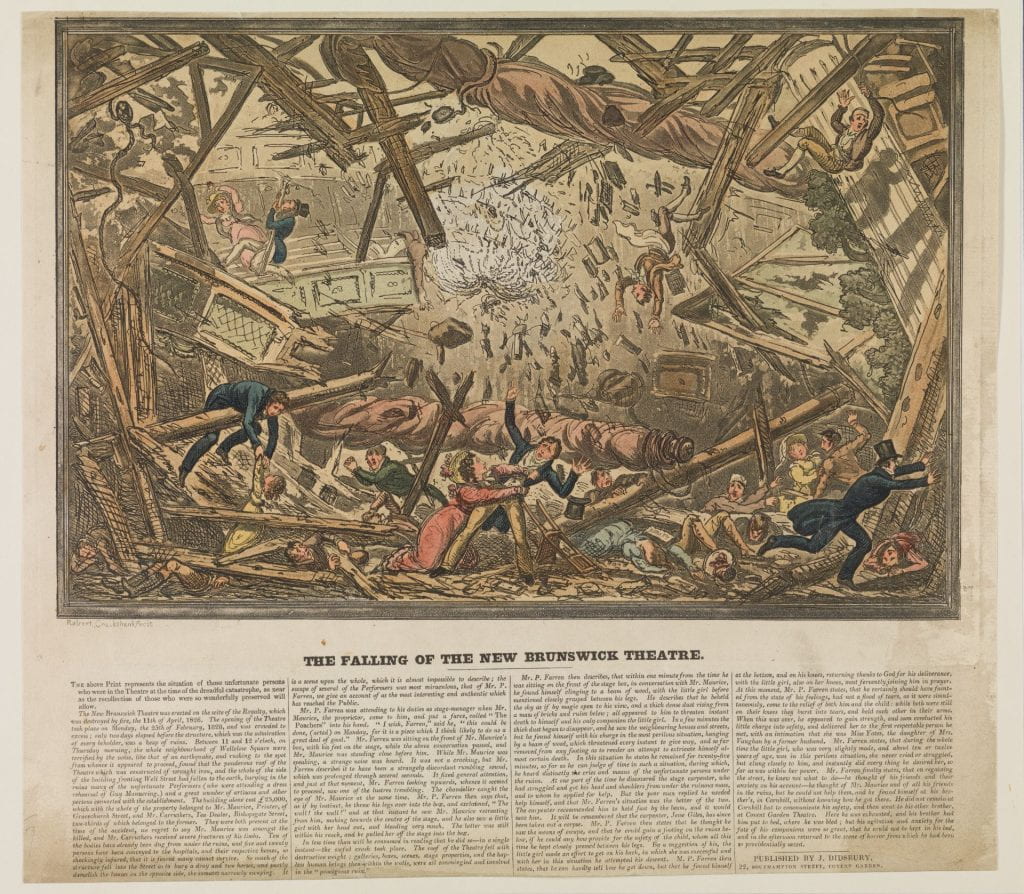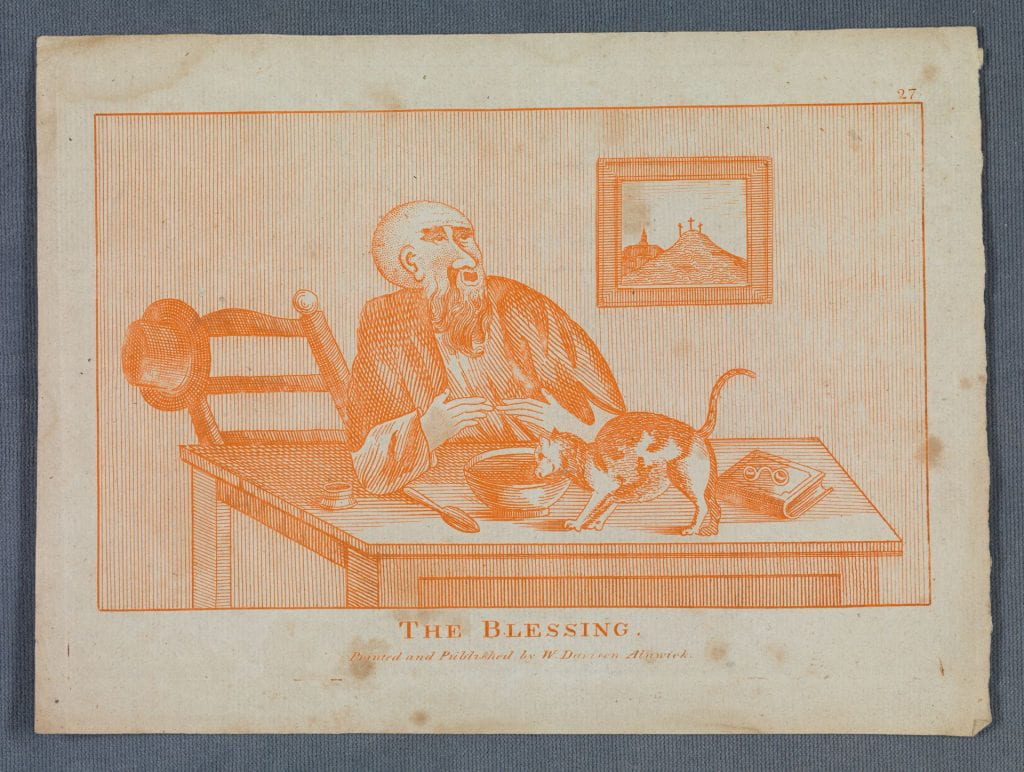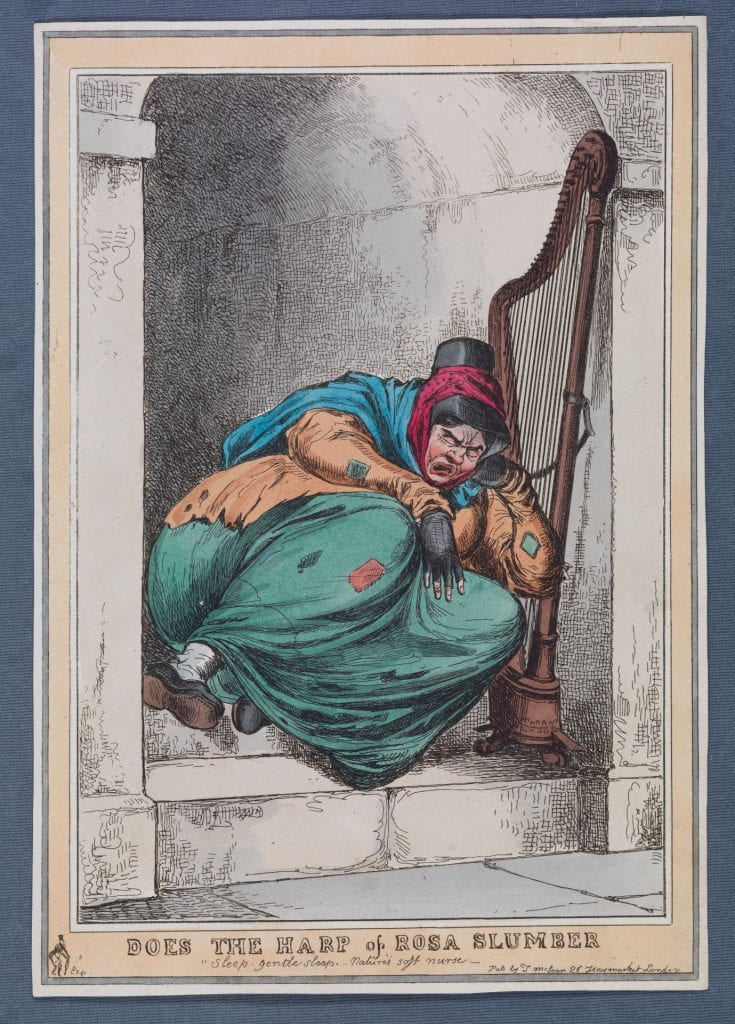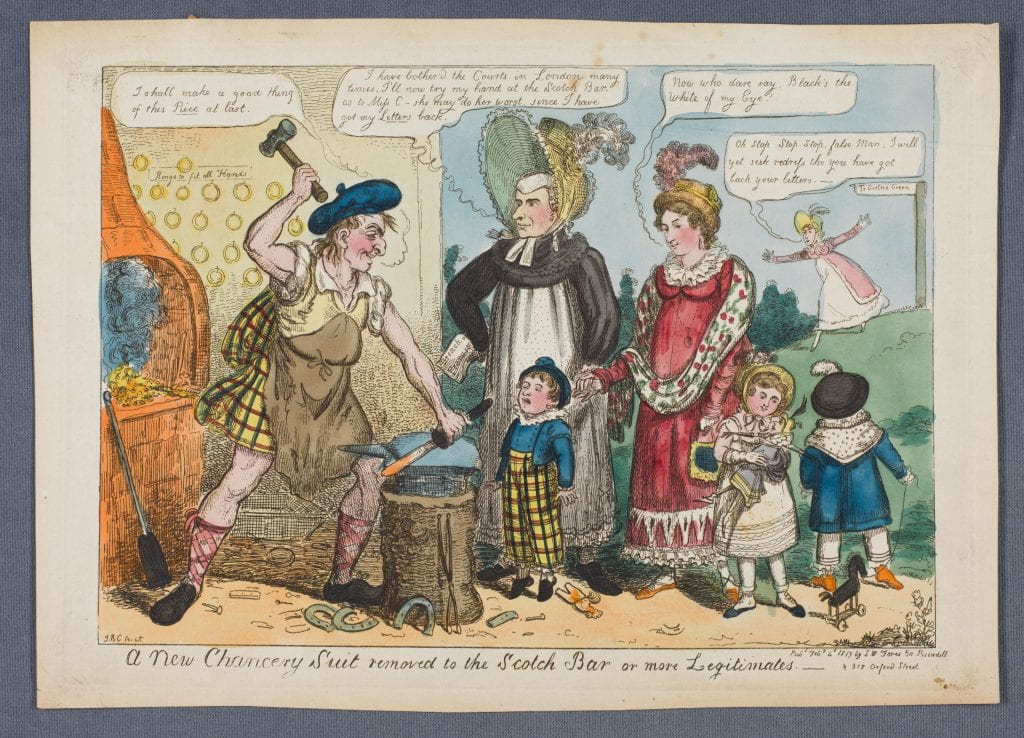
Print shows a Gretna Green marriage in an open-fronted smithy. Erskine, disguised in woman’s dress with a huge feathered bonnet over a barrister’s wig, holds the right hand of a demure-looking woman, modishly dressed and apparently pregnant. He holds a paper: ‘Breach of Promise’. With them are three young children. The smith wears Highland dress; he holds a red-hot bar on the anvil and raises his hammer, saying, “I shall make a good thing of this Piece at last.” Erskine says: “I have bother’d the Courts in London many times, I’ll now try my hand at the Scotch Bar–as to Miss C– she may do her worst since I have got my Letters back.” The woman says: “Now who dare say, Blacks the White of my Eye.” In the background (right) a young woman rushes down a slope towards the smithy, shouting, “Oh Stop Stop Stop, false Man, I will yet seek redress tho you have got back your letters–” Beside her is a sign-post pointing ‘To Gretna Green’. A little boy with Erskine’s features, wearing tartan trousers, stands on tip-toe to watch the smith; on the ground beside him is a toy (or emblem), a cock on a pair of breeches. A little girl stands by her mother nursing a doll fashionably dressed as a woman, but with Erskine’s profile. Another boy with a toy horse on a string stands in back view watching ‘Miss C’. Behind the smith is the furnace; on the wall hang many rings: ‘Rings to fit all Hands.’
- Printmaker: Cruikshank, Robert, 1789-1856, printmaker.
- Title: A new Chancery suit removed to the Scotch bar, or, More legitimates [graphic] / I.R.C. fecit.
- Publication: [London] : Pubd. Feby. 4th, 1819, by S.W. Fores, 50 Piccadilly & 312 Oxford Street, [4 February 1819]
819.02.04.01+
Acquired November 2022

